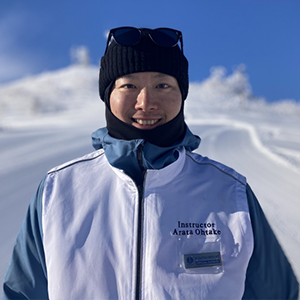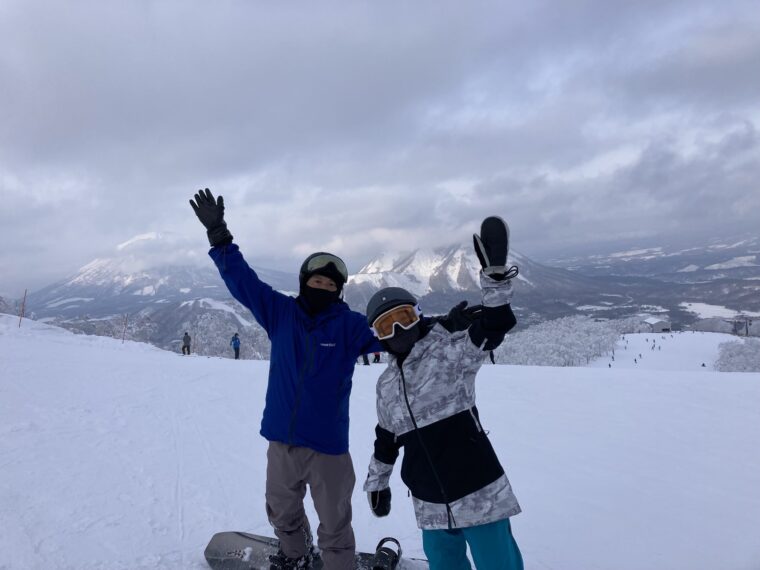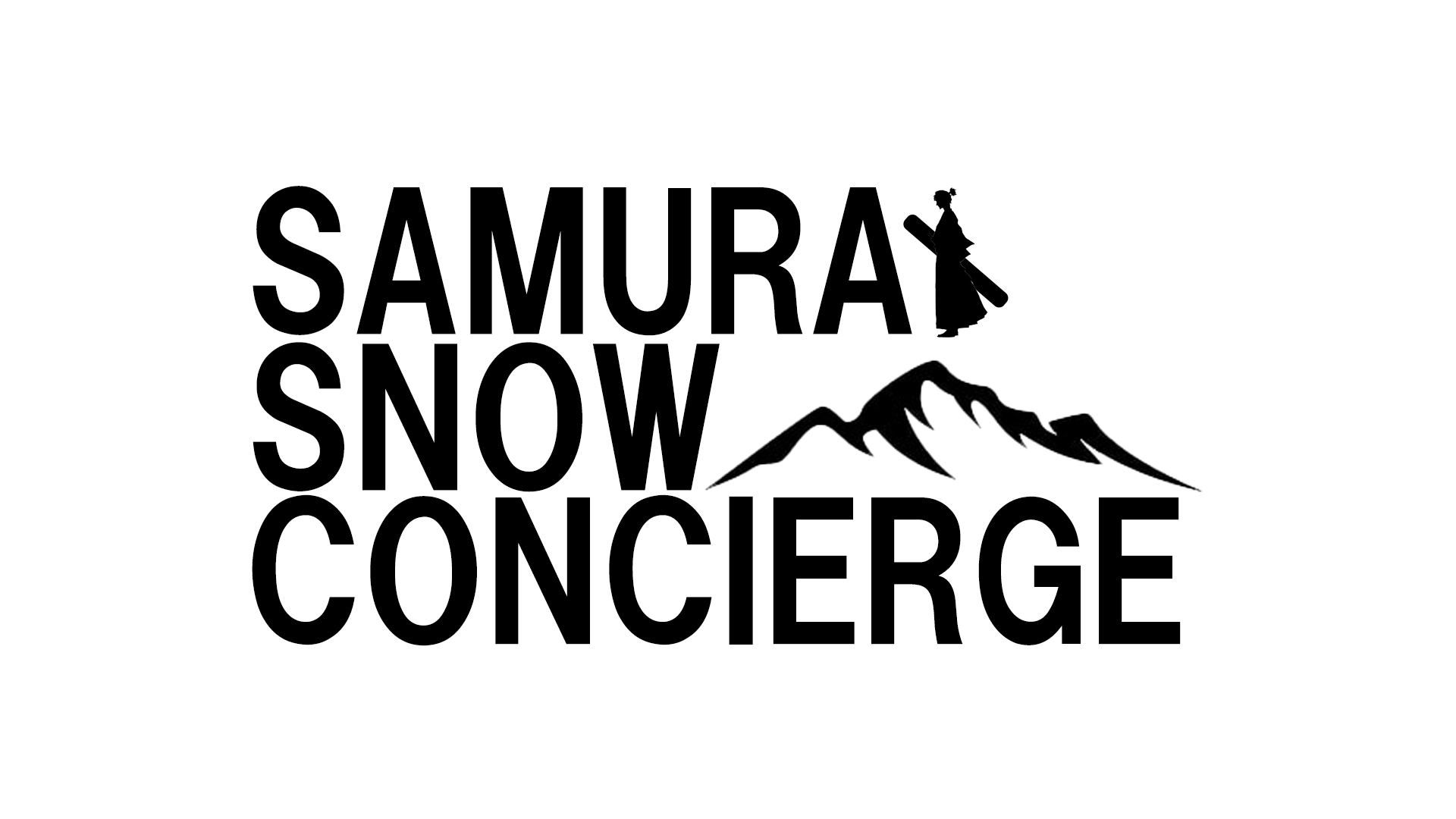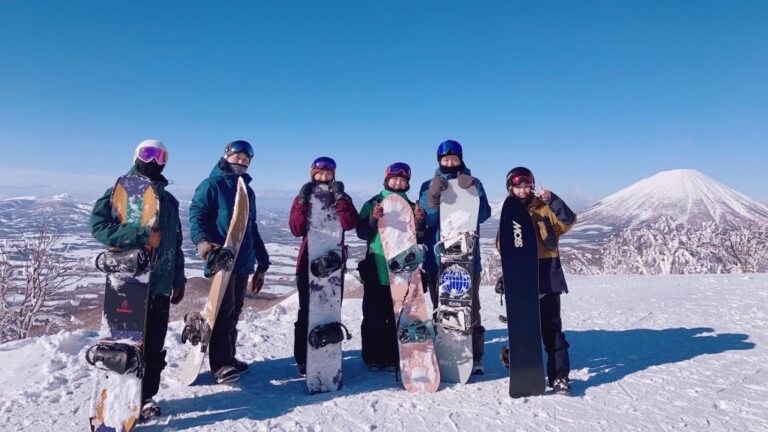“First time going snowboarding, but I have no idea what to bring!”
“Buying everything from scratch seems so overwhelming!”
If you’ve never been snowboarding before, it’s easy to get confused about what you actually need and what might just be convenient. Packing can quickly become stressful.
And if you start thinking, “Do I need this? Should I bring that too?” your luggage can easily spiral out of control.
That’s why, as active instructors with over 20 years of snowboarding experience, we’ve put together a list of:
Essential items you absolutely must bring
Things you can rent at the ski resort
Handy extras that aren’t essential but can make your day much more comfortable
We’ve also included some useful tips for beginners that are good to know before hitting the slopes. This guide will make your prep much easier and more enjoyable!
Must-Have Gear for Beginner Snowboarders
Let’s dive into what you need to bring. Some items can be rented at the resort, so decide whether to buy or rent before you go. ☆ indicates rental is possible.
Snowboard ☆
Of course, you need a snowboard to go snowboarding! Buying your own board can be expensive, so beginners can safely rent at first.
Once you try it and think, “Wow, this is fun! I want to go again!” you might be motivated to buy your own board, which can help you improve faster.

Popular resorts or peak season rentals sometimes sell out. To avoid disappointment, book your board in advance.
Bindings ☆
Bindings are what attach your boots to the board. Most rental boards already come with bindings, so you don’t need to worry if you’re renting.
Important: Make sure your boots fit the bindings correctly. Improper fit can prevent your boots from being secured properly.
Rental boards usually come with a leash, so ask staff how to attach it correctly.

It might feel tricky at first, but you’ll get used to putting them on and off after a few rides. Watching the staff demo it can save time and frustration.
Snowboard Boots ☆
You need special boots for snowboarding. Most resorts offer rentals.
However, some people avoid rentals for hygiene reasons, and during peak season, your size might not be available. Ill-fitting boots can cause blisters or injuries. If possible, either reserve your size early or bring your own boots.
Snowboarding Outfit (Jacket & Pants) ☆
Want to look cute or stylish while learning? Snowboard outfits can also be rented, but rental prices are often over $40–50 per day, and you might end up wearing the same outfit as someone else.
Buying your own outfit can boost your motivation and make learning more fun. Dressing how you like also helps with the “resort magic”—you’ll feel better, and it might even help you improve faster!
Gloves ☆
Essential for keeping your hands warm and protecting them from cuts or falls.
Since you’ll be getting on and off lifts often, choose gloves that are easy to move in. Some resorts rent gloves, but availability varies, so check ahead.
Goggles ☆
Goggles protect your eyes from UV rays, wind, and snow.
Even if it’s cloudy, UV rays are strong on the slopes. Without goggles, your eyes can burn or get damaged. They also protect your eyes if you fall.

Buy goggles in advance if possible; resort shops sell them too, but prices are higher.
Base Layer (Innerwear)
These are clothes you wear under your snowboard outfit.
Snowboarding can be cold, but you’ll also sweat, so choose base layers that are warm, breathable, and moisture-wicking.

HeatTech isn’t ideal—it keeps you warm but traps sweat, which can make you cold. Invest in snow-sport-specific base layers.
Fleece or Down Jacket
Wear over your base layer for added warmth. Adjust thickness depending on the weather—thin fleece is fine on mild days, thicker fleece or down for very cold or windy conditions.
Hat
Protects against cold and minor injuries. Most resorts don’t rent hats, so bring your own. Knit hats that cover your ears are ideal. Snowboard-specific hats are thicker, stretchy, and water-resistant, but any knit hat works if you’re in a pinch.
Snowboard Socks
Opt for:
Knee-high or just below
Cushioned for comfort
Bring an extra pair
Extra socks are useful in case your feet get sweaty or wet.
Cash
Some smaller resorts don’t accept credit cards, and restaurants may be cash-only. Carry only the cash you’ll need for safety.

A Ziploc bag can act as a waterproof wallet—transparent, easy, and low-risk.
Lift Pass Holder
A clear, wrist-wearable pass case is convenient for showing your lift ticket. Some outfits have built-in holders—check before buying.
ID & Insurance Card
You may need ID to rent equipment. Keep these in your car or hotel while snowboarding to prevent loss. Bring your insurance card just in case you need medical care.
Handy Extras
These aren’t strictly necessary but make your day more comfortable:
Protectors: Especially padded shorts to protect your hips from falls.
Balaclava: Covers your head and face for warmth; can also prevent your hat or goggles from flying off when you fall. Avoid scarves—they’re dangerous.
Inner gloves: Keep fingers warm for cold-sensitive people.
Sunscreen: UV on slopes is strong—reapply multiple times during the day.
Lip & hand balm: Protect lips and hands from sun and wind.
Pain relief patches: Muscle soreness is common after your first day.
Band-aids: For blisters from boots.
Pocket tissues: Cold and exertion can trigger runny noses—especially important if you want to stay looking cute or stylish.
Coin pouch: Useful for vending machines or small purchases.
Disposable warm packs: For extra warmth, especially during night skiing.
Wire lock: Secure your own board from theft.
Screwdriver: For adjusting bindings.
Portable charger: Cold drains phone batteries fast.
Chocolate/snacks: Quick energy boost for tired muscles.
Extra hat: For after snowboarding, so you don’t leave with messy, wet hair.
Pre-Knowledge Before Your First Snowboarding Trip

Choosing Your Stance
Regular: Left foot forward
Goofy: Right foot forward
Your stance affects binding setup. Test at home:
Which foot steps forward naturally?
Which foot comes forward if pushed gently from behind?
Which foot do you use to kick a ball?
Using your natural stance improves comfort and progress.
Carrying Your Board
Place your arm under the bindings for the easiest way to carry your snowboard without tiring your arms.
Slope Etiquette
Follow basic rules to keep everyone safe:
Always attach leash to your board
Yield to people in front
Watch merges carefully
Stay on designated runs
Don’t stop in dangerous spots or mid-course
Don’t block the lift area
Summary: Lessons Make Your First Snowboarding Trip More Fun
We’ve covered everything from essential gear to helpful extras for your first snowboarding trip.
Excitement and nerves are normal, but taking a lesson from a professional instructor is the fastest and safest way to get started. Lessons can teach safe falling techniques, correct posture, and lift safety.
We are Samurai Snow Concierge run a private ski & snowboard school in Rusutsu, Hokkaido, with experienced instructors. If you have questions about beginner lessons or practice methods, feel free to reach out—we’re happy to help!









コメント